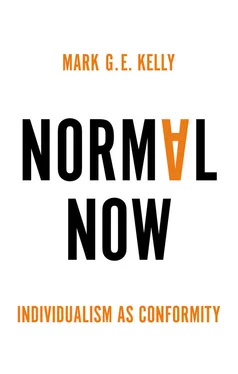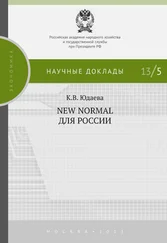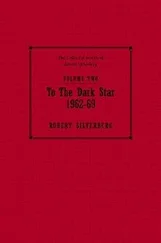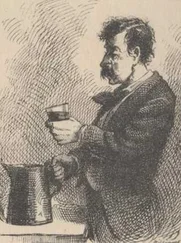In this chapter, I outline the history of normality, before moving on in the next chapter to detail the more recent development of what I call our ‘new norms’, and then, in the rest of the book, detailing how these have played out in different social realms.
I will throughout this book use the word ‘norm’ (and hence the derived adjectives ‘normal’ and ‘normative’) in a highly specific way, as I will now explain. This usage of the term derives from the work of two twentieth-century French philosophers, Georges Canguilhem and, following him, Michel Foucault. They in turn derive their use of the term ‘norm’ from the study of the actual history of norms.
This usage of the term then has a strong etymological basis, but there are manifold senses in which the term is used today that I am not employing here, even if these senses also do constitute part of the broad history of the use of the term that I am alluding to. I therefore do not use ‘norm’, as sociologists do, to mean any unwritten social convention. Nor do I use it to mean a formal rule or average; indeed, I precisely mean by norm that which is neither a formal rule nor an average.
My thesis here is sui generis , but might be said to intersect with (which is to say, potentially either dovetail with or conflict with) any number of other accounts about social and cultural change in the era under discussion. Christopher Lasch’s Culture of Narcissism is a particularly clear example of a thesis that is in many respects close to mine, but which has significantly different coordinates and claims in others. 1I have not sought to deal with any such intersections in any detail, however, in order instead to focus on honing my own thesis.
This is not merely a thesis about a change in norms in a sociological or moral sense, although I certainly do claim there is such a change. Rather, my conception of the ‘norm’ is much more specific, and hence so too are my claims. This serves as the fundamental point of difference between my thesis and a superficially similar survey of the sociology of morals under capitalism such as that by Luc Boltanski and Eve Chiapello. 2This does not mean that what I say is meant to contradict such accounts. Rather, I would hope mine ultimately dovetails productively with others. 3
What I mean by a norm is, in short, a model for the perfect operation of the thing to which it pertains. 4I believe that this definition of the norm is the one with which Foucault and Canguilhem work, and which can be found in historical discourses about norms from the seventeenth century on. Other scholars disagree that this is Foucault’s understanding of the norm, but this ultimately does not matter for the purposes of this book. Regardless of its provenance, this is what I mean in this book when I refer to the norm and derived terms.
Canguilhem’s book, The Normal and the Pathological , written in the middle of the twentieth century, remains the landmark investigation into the concept of normality. 5Canguilhem was a French medical doctor, historian and philosopher of science. His study concerns the technical question of medical normality. This ostensibly specialist work is more generally illuminating than one might imagine, not least because medicine has operated as a motor for the diffusion of the concept of normality throughout our culture.
Modern medicine is based on a notion of medical normality, which is to say on defining health as accordance with a predefined norm. Canguilhem’s key question is that of the origin of this norm. Modern medicine clearly considers itself to be a scientific enterprise, based on empirical study and objective criteria. Its basic norms do not really measure up to this self-image, however.
Canguilhem notes that it is commonly believed in the medical profession that what is normal is simply what is average, such that the normal condition of health can be defined by observing what most people’s condition is. He concludes, however, that medical normality cannot possibly be defined or derived in this way. To be normal is defined in medicine as being optimally healthy, and this is clearly not the average condition of human beings. Rather, most people are to some extent, in some way or other, unhealthy , which is to say that they deviate from the norm. Unless exactly as many people deviate in two opposite directions – for example, exactly as many people have high blood pressure as have low blood pressure, to the same extent – then the average will not be the norm. And such an absolutely symmetrical deviation in both directions from the norm never occurs in reality.
In fact, the word ‘normal’ only came to be associated with averages when statisticians in the late nineteenth century applied this word – which was by that time already in use in other technical fields, and in medicine in particular – to an extant statistical idea that they had called by other names previously, dubbing this now the ‘normal distribution’. 6However, I will argue that this invention of a statistical notion of the normal thenceforth serves to give a patina of objectivity to the concept of normality in general.
Canguilhem concludes that the medical notion of normality, although presented as an objective and scientific judgement, is in fact normative , which is to say, a judgement of what things should be like. Such normative judgements cannot be empirical inferences from scientific study – as Ian Hacking points out, statistical judgements of normality cannot have any normative implications 7– but rather must be a priori principles. These principles are, in a word, norms, imaginary standards of perfection to which reality is held.
Although it might seem like a great scandal that medicine is based on prejudices, Canguilhem does not reject these norms. He is instead quite clear that modern medicine needs the yardstick of normality to operate. Discarding it would cost untold lives. He instead suggests reforming the standard of normality by abandoning the pretence that it is objective and acknowledging its subjectivity by making patients themselves the final arbiters of whether they actually are sick.
For my part, I am not advocating even this: unlike Canguilhem, I do not have a medical background, and am not directly concerned with medical norms. Rather, I am concerned with what has happened as the notion of normality has exploded out of medicine and become a social phenomenon over the last two centuries.
The concept of normality implies an underlying concept of the norm, the norm being the measure of what counts as normal. This is somewhat obscured in English by the fact that the word ‘normal’ is much more prominent than ‘norm’, perhaps because it came into our language first, only to be followed by the word ‘norm’ later. 8It is the latter word that is older, however, in the tongues in which these terms originated, namely the Romance languages.
‘Norm’ comes from an old Latin word for a carpenter’s rule, norma . For a long time in European languages, cognates of norma were synonymous with the cognates of a different Latin word with a similar literal meaning, regula (from which we get the English word ‘rule’, in all its senses). At a certain point, the meanings of these two terms diverged sharply. Canguilhem finds that this new sense of the cognates of ‘norm’ first appears in relation to seventeenth-century French ‘normative grammar’. 9
Michel Foucault, following in Canguilhem’s footsteps, detects the logic of normality earlier than in the application of words derived from norma to describe it, namely in medieval practices for dealing with outbreaks of plague. While the exact point of origin of this logic might not be precisely locatable and matters little to the claims I want to make about contemporary society, it is at least somewhat important that this is a concept that has been invented at some point or other, and the fact that the genealogy of this notion involves plagues cannot but be interesting to us, living as we are through the COVID-19 pandemic.
Читать дальше












